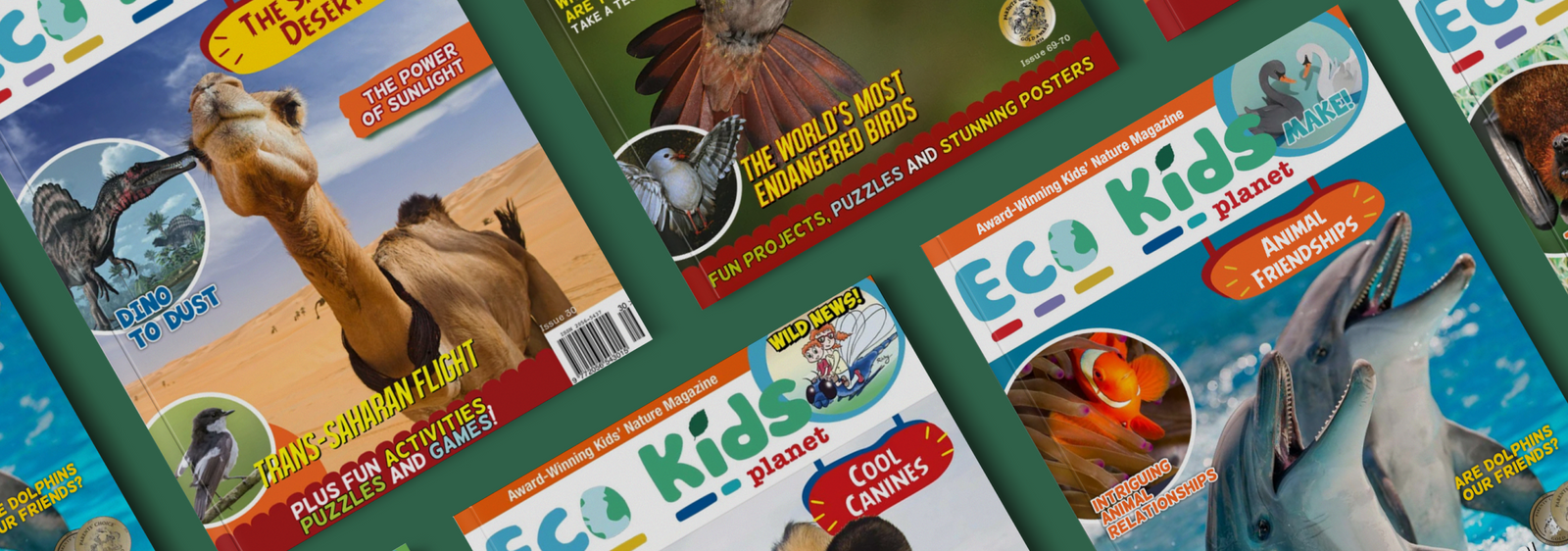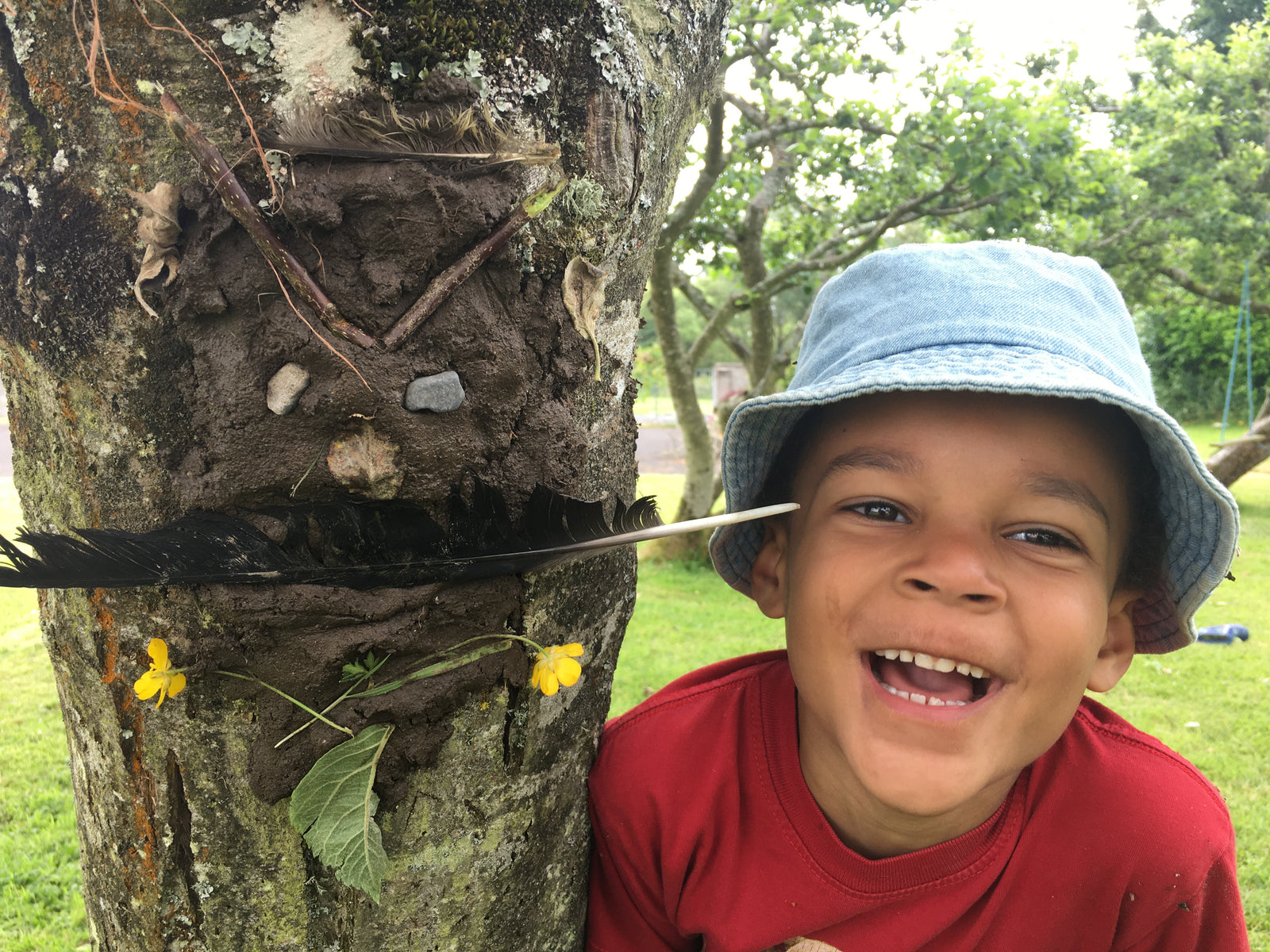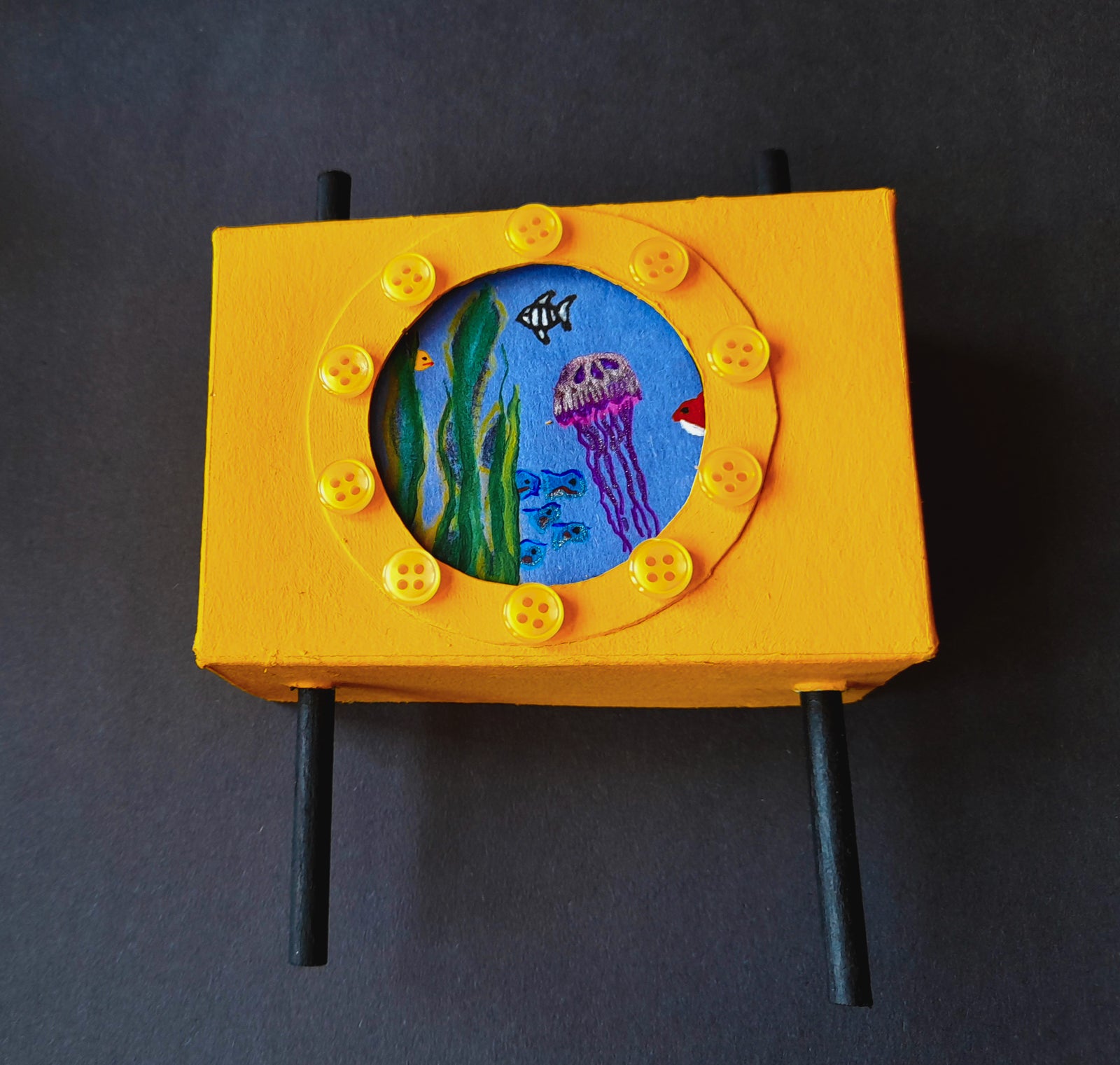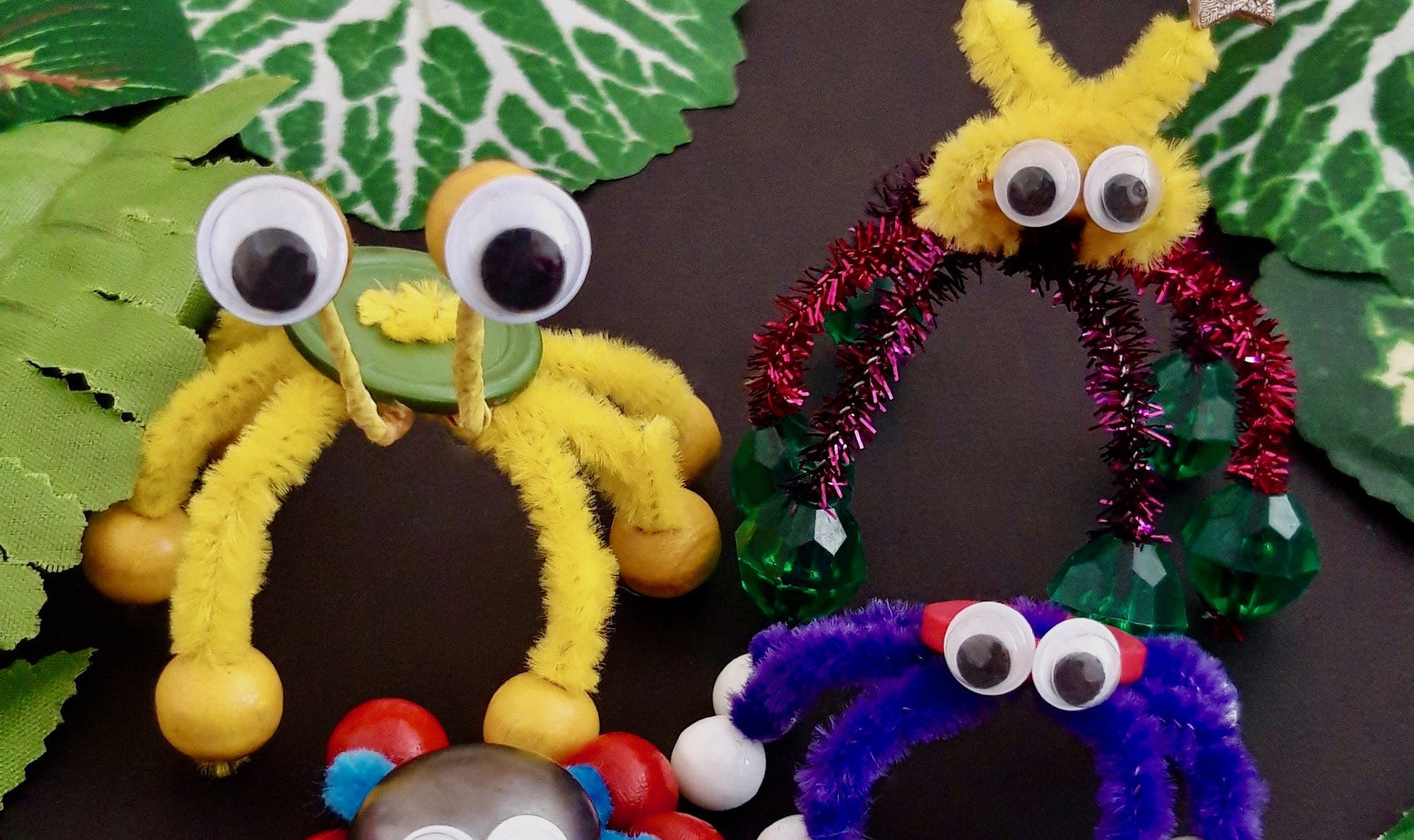Your Cart is Empty
In June’s ‘Tiny Wildlife’ issue, we asked you to create forest mud faces. Thank you to all of you who embraced the messy challenge and sent us your mud-spattered entries!
If you could pilot a submarine, what would you see? This clever viewer features a scrolling underwater scene!
Use inspiration from nature to make these colourful button bugs. They are so easy to make, you will soon have a whole swarm. What you need: Buttons in different colours and sizes Pipe cleaners Googly eyes Beads for feet/antennae Strong glue Scissors What to do: Step 1: Cut a pipe cleaner in...
This little blue-green lizard certainly lives up to its name. But its gorgeous good looks are one reason why this rare reptile is disappearing from its African home. Let's find out why... A BIT ABOUT... Geckos are a small type of lizard. There are about 1,500 different species in the world. They’r...
This month, have some messy fun creating forest faces!
This is a perfect activity to celebrate International Mud Day on 29th June!
In April’s ‘Winged Insects’ issue, we asked you to design your own butterflyEaster egg. What wonderful entries you sent us – fun, creative and beautiful! Ahuge thank you to everyone who entered the competition. Congratulations to our five winners! Becky, age 9, Durham “This is my gigantic moth/butt...
What you need: An egg box Coloured tissue paper Fabric scraps Ribbon, sequin string, lace, cord, etc Yarn Beads Glue Scissors What to do: Step 1: Cut the egg box up into sections. Carefully make a hole in the top of one section with a sharp pencil point. This will be your jellyfish’s bell....
In our ‘Baby Animals’ issue, we asked you to create an information card for ababy animal. Thanks a million to everyone who entered the competition! Weloved learning some interesting facts about baby animals. Congratulations to our five winners! Amy, age 10, Richmond, Canada Chloe, age 7, Worthin...










